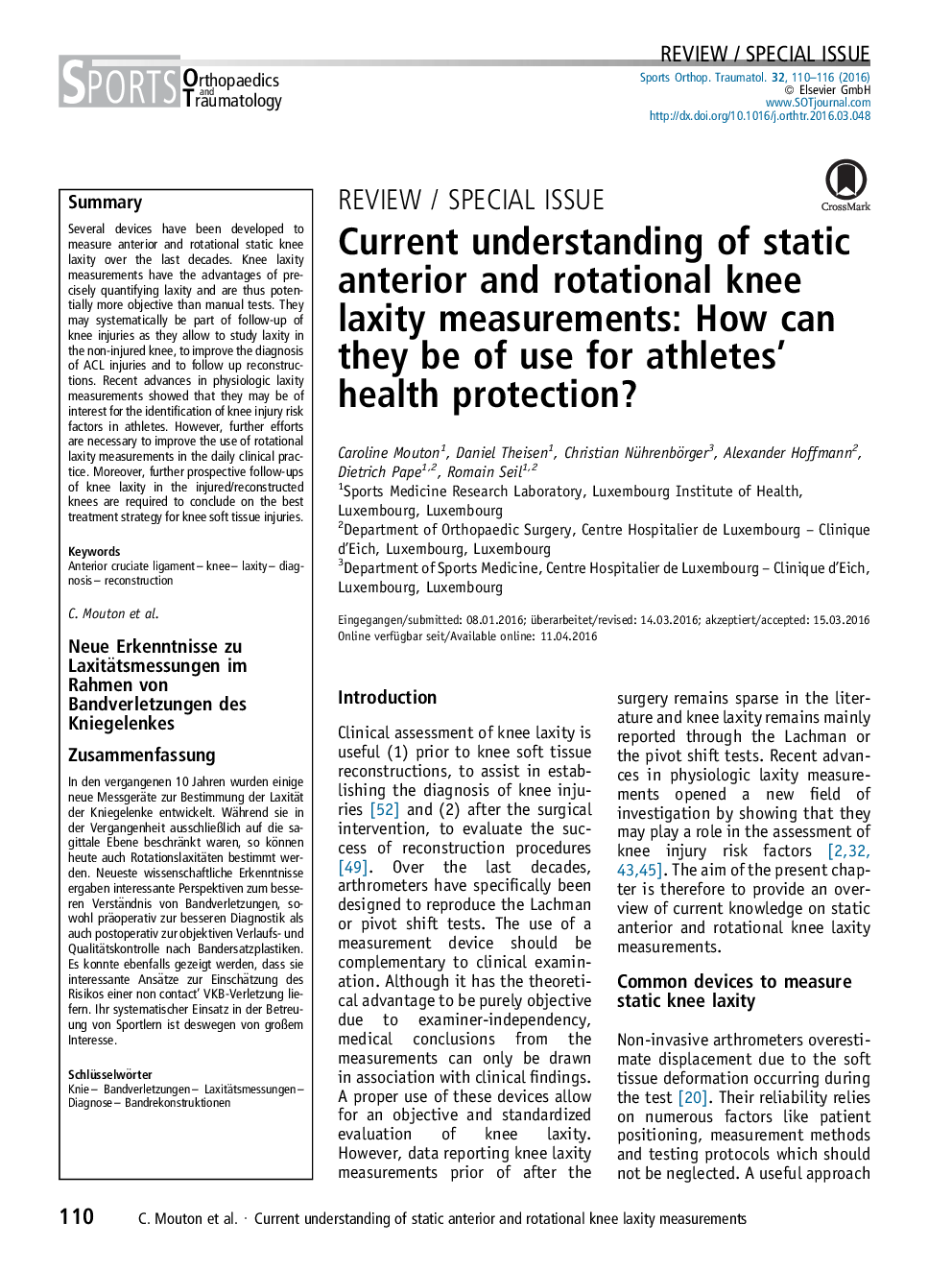| Article ID | Journal | Published Year | Pages | File Type |
|---|---|---|---|---|
| 2740070 | Sports Orthopaedics and Traumatology | 2016 | 7 Pages |
SummarySeveral devices have been developed to measure anterior and rotational static knee laxity over the last decades. Knee laxity measurements have the advantages of precisely quantifying laxity and are thus potentially more objective than manual tests. They may systematically be part of follow-up of knee injuries as they allow to study laxity in the non-injured knee, to improve the diagnosis of ACL injuries and to follow up reconstructions. Recent advances in physiologic laxity measurements showed that they may be of interest for the identification of knee injury risk factors in athletes. However, further efforts are necessary to improve the use of rotational laxity measurements in the daily clinical practice. Moreover, further prospective follow-ups of knee laxity in the injured/reconstructed knees are required to conclude on the best treatment strategy for knee soft tissue injuries.
ZusammenfassungIn den vergangenen 10 Jahren wurden einige neue Messgeräte zur Bestimmung der Laxität der Kniegelenke entwickelt. Während sie in der Vergangenheit ausschließlich auf die sagittale Ebene beschränkt waren, so können heute auch Rotationslaxitäten bestimmt werden. Neueste wissenschaftliche Erkenntnisse ergaben interessante Perspektiven zum besseren Verständnis von Bandverletzungen, sowohl präoperativ zur besseren Diagnostik als auch postoperativ zur objektiven Verlaufs- und Qualitätskontrolle nach Bandersatzplastiken. Es konnte ebenfalls gezeigt werden, dass sie interessante Ansätze zur Einschätzung des Risikos einer ‚non contact’ VKB-Verletzung liefern. Ihr systematischer Einsatz in der Betreuung von Sportlern ist deswegen von großem Interesse.
